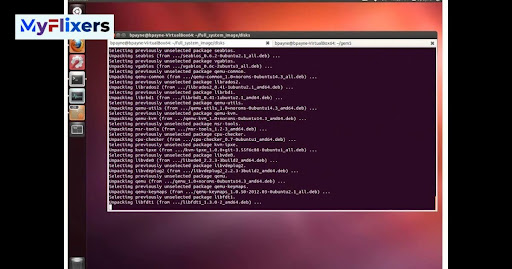Are you tearing your hair out over a stubborn gem5 simulator error? You’re not alone. The dreaded “Can’t Find a Working Python Installation gem5” message has frustrated many researchers and developers. But fear not! We’re about to embark on a journey to smash this error and get you back to simulating in no time.
Understanding the Error: What’s Really Going On?
What the Heck Does This Error Mean Anyway?
When you encounter the “error: can’t find a working python installation gem5“, it’s essentially gem5 throwing its hands up in despair. This error message is gem5’s way of saying, “Hey, I can’t find the Python I need to function!” It’s a showstopper because gem5 relies heavily on Python to run its simulations.
Why gem5 and Python Are Like Peanut Butter and Jelly
The gem5 simulator and Python go together like peanut butter and jelly. gem5 is built using Python, and many of its scripts and tools depend on it. Python acts as the backbone for running gem5’s functionalities. Without a proper Python setup, gem5 is like a car without an engine – it just won’t go.
Common Culprits Behind the “Can’t Find Python” Mess
Several issues can trigger this error:
- Wrong Python version: gem5 might be looking for a specific Python version that’s not installed.
- Python MIA from your system PATH: Even if Python’s installed, gem5 might not be able to find it.
- Multiple Pythons duking it out: Having several Python versions can confuse gem5.
Time for a Python Check-Up: Preliminary Checks
Is Python Actually Installed? Let’s Find Out!
First things first, let’s make sure Python is actually on your system. Open up a terminal or command prompt and type:
Copy
python –version
If you see a version number, great! If not, you’ve found your first problem to solve.
Following the PATH: Is Python Where It Should Be?
Your system’s PATH is like a roadmap for programs. If Python’s not on this map, gem5 can’t find it. Here’s how to check your PATH:
- On Windows: echo %PATH%
- On macOS/Linux: echo $PATH
Look for the directory where Python is installed. If it’s missing, you’ll need to add it.
Too Many Pythons in the Kitchen?
Having multiple Python installations can cause conflicts. To check for this, use:
- On Windows: where python
- On macOS/Linux: which python
If you see multiple entries, you might need to clean house.
Playing Favorites: Setting the Default Python Version
If you have multiple Python versions, you may need to tell your system which one to use by default. On macOS/Linux, you can use pyenv to manage this:
bash
Copy
pyenv global 3.8.10
This sets Python 3.8.10 as the default, which might be necessary for gem5.
Rolling Up Our Sleeves: Step-by-Step Troubleshooting

Making Sure gem5 and Python Are BFFs
Different versions of gem5 require specific Python versions. Check the gem5 documentation to ensure you’re using a compatible Python version. This information is usually found in the installation requirements or the README file of the gem5 repository.
When in Doubt, Reinstall: Giving Python a Fresh Start
Sometimes, a clean slate is the best approach. Here’s how to reinstall Python:
- Uninstall your current Python (use the Control Panel on Windows or package manager on macOS/Linux).
- Download the correct Python version from python.org.
- Install, making sure to add Python to your PATH during installation.
Pointing gem5 in the Right Direction
You can use environment variables to tell gem5 where to find Python. Set the PYTHON environment variable:
- On Windows: set PYTHON=C:\Path\To\Python\python.exe
- On macOS/Linux: export PYTHON=/usr/bin/python3.8
Virtual Environments: Your Personal Python Playground
Virtual environments are a game-changer for managing Python dependencies. Here’s how to set one up:
bash
Copy
pip install virtualenv
virtualenv gem5_env
source gem5_env/bin/activate # On Windows, use gem5_env\Scripts\activate
Now you have a clean Python environment just for gem5!
Taking Off the Kid Gloves: Advanced Troubleshooting
CSI: Python Edition – Diagnosing Deep-Seated Issues
If you’re still stuck, it’s time to dig deeper. Check the gem5 installation logs for clues:
- On Linux/macOS: cat /var/log/install.log | grep gem5
- On Windows: Look for log files in the gem5 installation directory
When Your OS is Being a Pain: System-Specific Fixes
Different operating systems can cause unique headaches:
- Windows: Ensure you have the correct Visual C++ redistributables installed.
- macOS/Linux: Check for missing library dependencies with ldd or otool -L.
DIY Python: Building from Source for the Win
Sometimes, you need a custom Python build. Here’s a quick guide:
bash
Copy
wget https://www.python.org/ftp/python/3.8.10/Python-3.8.10.tgz
tar xzf Python-3.8.10.tgz
cd Python-3.8.10
./configure –enable-optimizations
make
sudo make altinstall
Playing Matchmaker: Ensuring gem5 and Python Compatibility
If you’re using git to manage gem5, you can switch to a compatible branch:
bash
Copy
git checkout -b branch-name origin/branch-name
Replace branch-name with the version that matches your Python installation.
An Ounce of Prevention: Keeping Future Errors at Bay
Staying Ahead of the Curve: Ensuring Future Compatibility
To avoid future headaches:
- Regularly update your Python installation
- Use version management tools like pyenv
- Keep gem5 updated to the latest stable version
Dear Diary: The Power of Documentation and Logging
Start keeping a log of your setup process. Note down:
- Python version
- gem5 version
- Any specific configurations or patches applied
This documentation will be a lifesaver if you encounter issues in the future.
Thinking Outside the Box: Alternative Solutions
Docker to the Rescue: Containerizing Your gem5 Woes
Docker can provide a consistent environment for gem5. Here’s a simple Dockerfile to get started:
dockerfile
Copy
FROM ubuntu:20.04
RUN apt-get update && apt-get install -y \
python3 \
python3-pip \
build-essential \
git
RUN git clone https://gem5.googlesource.com/public/gem5
WORKDIR /gem5
RUN scons build/X86/gem5.opt
CMD [“bash”]
Build and run with:
bash
Copy
docker build -t gem5-image .
docker run -it gem5-image
Ready-Made Goodness: Using Pre-configured Virtual Machines
Several universities and research groups offer pre-configured VMs with gem5 and Python already set up. Check out the gem5 website or your institution’s resources for these time-saving options.
Wrapping It Up: You’re Now a gem5 Python Error-Busting Pro!
We’ve covered a lot of ground, from basic checks to advanced troubleshooting and alternative solutions. Remember, the key to resolving the “Can’t Find a Working Python Installation gem5” error is methodical troubleshooting and ensuring compatibility between your Python environment and gem5.
Don’t let this error hold you back from your gem5 simulation work. With the strategies we’ve discussed, you’re well-equipped to tackle this issue head-on. Happy simulating!
FAQs
What exactly is gem5, and why should I care?
gem5 is a powerful, open-source system-level simulator used for computer architecture research and development.
Can I use Anaconda with gem5, or is that asking for trouble?
While possible, using Anaconda with gem5 can introduce complexities. It’s generally recommended to use a standard Python installation.
Help! I’ve tried everything, and I’m still stuck. What now?
Reach out to the gem5 community forums or mailing lists. The community is often very helpful with troubleshooting.
Is there a way to avoid these gem5 Python issues altogether?
Using Docker or pre-configured VMs can significantly reduce the chances of encountering these issues.
Conquering the “Can’t Find a Working Python Installation gem5” error is all about patience, systematic troubleshooting, and sometimes thinking outside the box. With these tools in your arsenal, you’re ready to tackle any Python installation error that comes your way in your gem5 journey!

